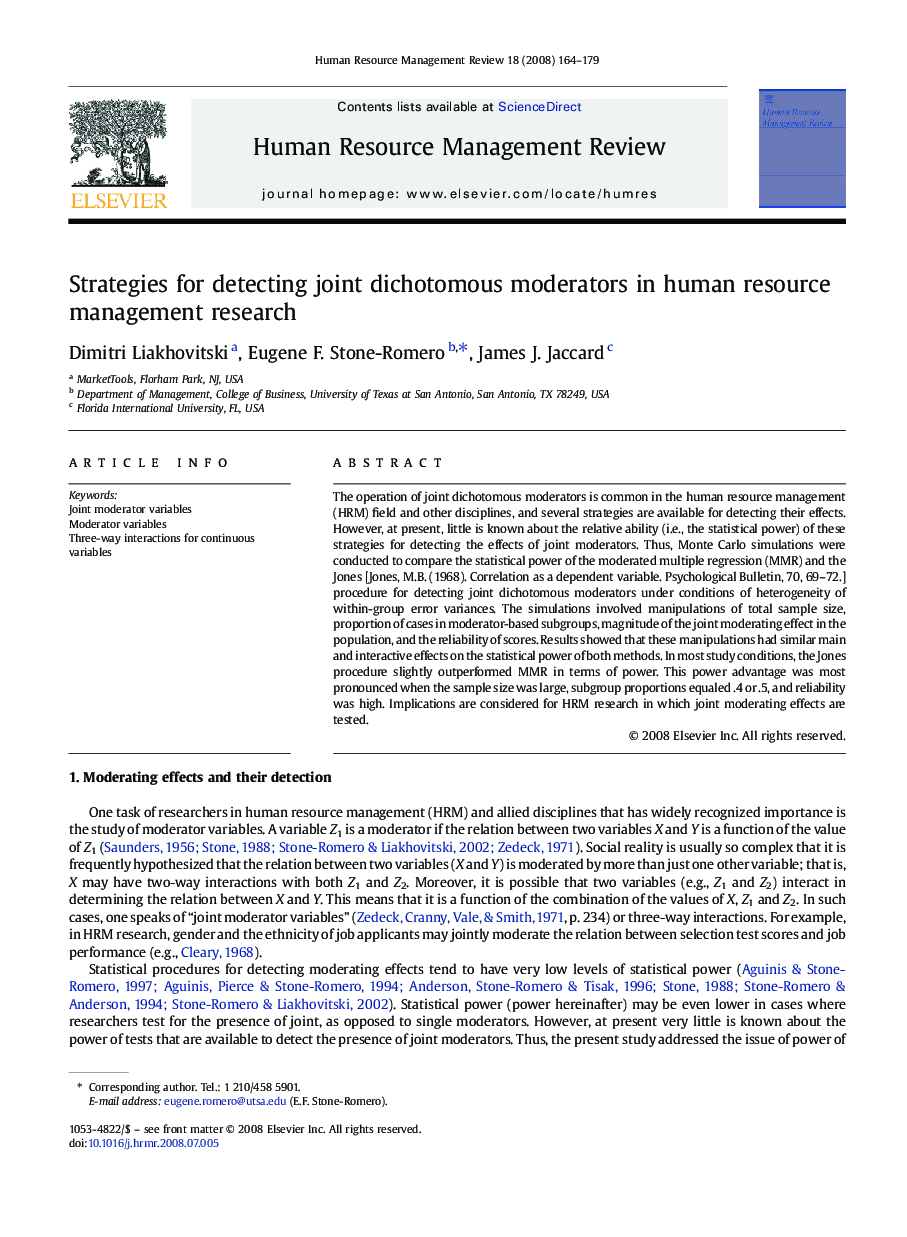| Article ID | Journal | Published Year | Pages | File Type |
|---|---|---|---|---|
| 879880 | Human Resource Management Review | 2008 | 16 Pages |
The operation of joint dichotomous moderators is common in the human resource management (HRM) field and other disciplines, and several strategies are available for detecting their effects. However, at present, little is known about the relative ability (i.e., the statistical power) of these strategies for detecting the effects of joint moderators. Thus, Monte Carlo simulations were conducted to compare the statistical power of the moderated multiple regression (MMR) and the Jones [Jones, M.B. (1968). Correlation as a dependent variable. Psychological Bulletin, 70, 69–72.] procedure for detecting joint dichotomous moderators under conditions of heterogeneity of within-group error variances. The simulations involved manipulations of total sample size, proportion of cases in moderator-based subgroups, magnitude of the joint moderating effect in the population, and the reliability of scores. Results showed that these manipulations had similar main and interactive effects on the statistical power of both methods. In most study conditions, the Jones procedure slightly outperformed MMR in terms of power. This power advantage was most pronounced when the sample size was large, subgroup proportions equaled .4 or .5, and reliability was high. Implications are considered for HRM research in which joint moderating effects are tested.
